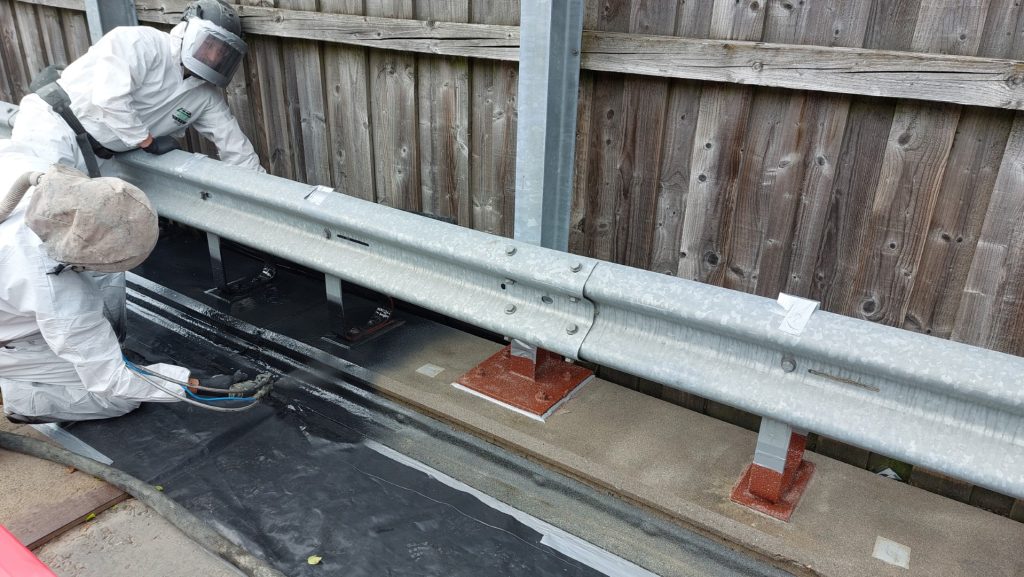The moisture content of the concrete was checked and recorded, along with the climatic conditions in order to ensure compliance with the manufacturers recommendations prior to the priming of all concrete surfaces using a damp tolerant epoxy primer. A second coat of the same primer was applied and a quartz aggregate dressed into the wet resin.
As standard we always double prime when coating concrete with polyurea as the hot application and exothermic reaction will cause any trapped air in the concrete to expand and create pin holes if not properly sealed. By double priming this reduces the risk of this phenomenon to a minimum.
The quartz aggregate was employed due to the external location, which could mean that the primer would exceed its recoat window or be exposed to moisture leading to amine blush / blooming. This is a milky film which forms on epoxy coatings when exposed to moisture before full cure. By blinding with a quartz aggregate we created a coarse sand paper like texture that provides such an excellent mechanical anchor that it overcomes the two aforementioned risks to ensure excellent adhesion of the polyurea membrane.
Once cured this was followed by extensive detailing around all of the barrier contact points and expansion joints using a polyurethane jointing compound in order to provide a suitable surface for polyurea application.
All steel components were primed using our specifically developed Corrolast DSP primer. This is designed for difficult surfaces to adhere to such as glass, galvanised steel and stainless steel – without the need for abrasive blasting to ensure optimum adhesion of the polyurea membrane.












